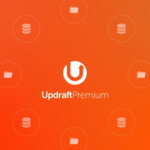In the ever-growing food delivery industry, StackFood Multi Restaurant 7.2 Nulled stands out as a powerful and versatile solution for managing multiple restaurants. Built with Laravel, a robust PHP framework, StackFood offers a comprehensive suite of features for streamlining food ordering, delivery, and restaurant operations.
Key Feature of StackFood Multi Restaurant
- Multi-Restaurant Management: StackFood seamlessly handles multiple restaurants, enabling you to manage menus, orders, deliveries, and payments from a centralized platform.
- Laravel Framework: Laravel’s powerful and secure foundation ensures scalability, maintainability, and security for your food delivery business.
- Admin Panel: The intuitive admin panel provides complete control over restaurant settings, user management, order tracking, and financial reporting.
- Restaurant Panel: Restaurant owners can manage their menus, orders, and customer information through their own dedicated panel.
- Flutter Mobile Apps: StackFood offers ready-made Android and iOS mobile apps, providing a seamless user experience for customers and delivery personnel.
Benefits of Using StackFood Multi Restaurant 7.2 Nulled:
- Reduced Costs: Eliminate the need for multiple third-party delivery services, saving you money and simplifying operations.
- Increased Efficiency: Streamlined ordering, delivery, and payment processes enhance efficiency and reduce errors.
- Enhanced Customer Experience: Provide a seamless and personalized ordering experience for your customers.
- Improved Restaurant Management: Empower restaurant owners to manage their businesses effectively and independently.
Overall, StackFood Multi Restaurant 7.2 Nulled is a powerful and versatile solution for managing multi-restaurant food delivery businesses. Its robust Laravel framework, comprehensive features, and user-friendly interface make it an ideal choice for businesses seeking to streamline operations, reduce costs, and enhance customer satisfaction.
In addition to the key features and benefits mentioned above, StackFood Multi Restaurant 7.2 Nulled also offers:
- Multiple Payment Gateways: Support for various payment options, including credit cards, PayPal, and Stripe.
- Order Tracking System: Real-time order tracking for customers and delivery personnel.
- Push Notifications: Keep customers informed about order status and delivery updates.
- Customizable Themes: Tailor the appearance of your website and mobile apps to match your brand identity.
- Regular Updates: Continuous development and support to ensure optimal performance and security.
If you’re looking for a reliable and cost-effective solution to manage your multi-restaurant food delivery business, StackFood Multi Restaurant 7.2 Nulled is an excellent choice. Its comprehensive features, user-friendly interface, and robust Laravel framework make it a powerful tool for streamlining operations, reducing costs, and enhancing customer satisfaction.
Features of StackFood Multi-Restaurant App:
- Accurately Define Geographic Coverage on the Map
- Efficient Dispatch Management System
- Comprehensive User App with Advanced Features
- Robust Food Management Capabilities
- Dedicated Delivery Men Apps
- Manual Assignment of Delivery Personnel
- Business Configuration Settings
- Support for Multiple Payment Gateways
- Advanced Order Management Functionality
- Reporting and Statistics for Insightful Analytics
- Marketing Section for Promotional Activities
- Employee Management Section
- Seamless Integration of SMS OTP for Authentication
- Capability to Handle Multiple Restaurants
- Accounts Section for Financial Management
How to Install WordPress Themes
- Start by downloading the theme.zip file from the source to your local computer.
- In your WordPress Administration area, navigate to Appearance > Themes and click on Add New.
- Within the Add New theme screen, you’ll find a new option: Upload Theme.
- Open the theme upload form, click Choose File, select the theme zip file on your computer, and then click Install Now.
- Once installed, log in to your control panel, go to Appearance > Themes, hover over the new theme, and click Activate. Your new theme is now active, and you can explore your updated site design.
How Install WordPress Themes using FTP:
- Launch Filezilla, enter your login details, and click Quickconnect.
- In the following window, navigate to the Remote Site and the root directory (your site’s name). Select /rootdirectory/web/content/wp-content/themes.
- In the Local Site window, choose the folder containing your saved theme, right-click for more options, and select Upload.
- After successfully uploading your theme to WordPress, log in to your control panel, go to Appearance > Themes, hover over the new theme, and click Activate.
Installing WordPress Plugins Manually:
- From your WordPress dashboard, go to Plugins > Add New.
- Click Choose File, locate the plugin .zip file, and click Install Now.
- Once the installation is complete, click Activate Plugin.
Adding a Plugin to Your WordPress Website via FTP:
- Download the desired plugin as a .zip file from either the WordPress directory or a third-party source.
- Extract (or unzip) the plugin file, creating a folder with the same name as the .zip file.
- Connect to your WordPress website’s server using FTP through an FTP client.
- In your WordPress file directory, open the wp-content folder, and then open the plugins folder.
- Upload the unzipped plugin folder to the plugins directory.
- Return to your WordPress dashboard, go to Plugins > Installed Plugins, find your new plugin, and click Activate.




